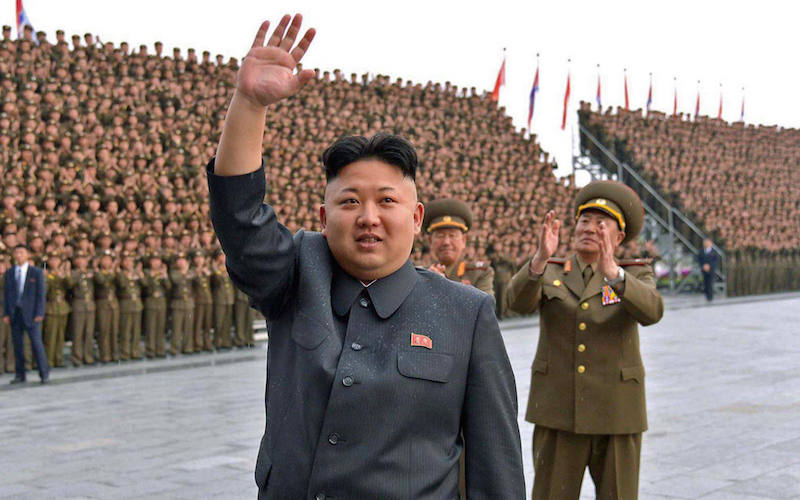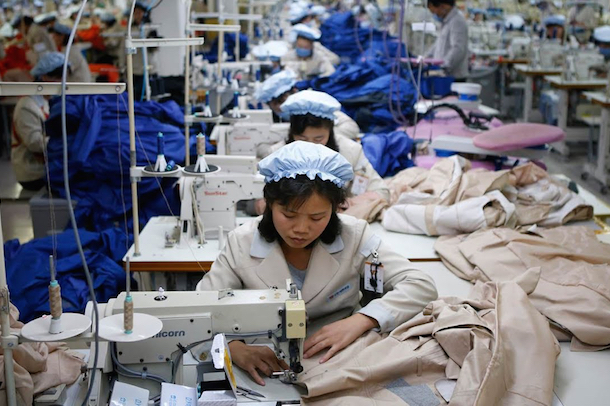
Drowning Kaesong: The End of inter-Korean Cooperation and Return to Cold War Politics?
On February 10, 2016, South Korea decided to shut down the Kaesong Industrial Complex (KIC). Seoul’s decision followed North Korea’s nuclear test on January 6 and its long-range missile launch one month later. Pyongyang considered the South’s decision to shutter Kaesong “an act of war.” They responded swiftly by expelling all South Korean nationals from the area and freezing factory assets by South Korean firms. Thereafter, the North cut off all access routes to the KIC (which is situated on North Korean territory) and declared it to be under military control. Oddly enough, Pyongyang also severed the military hotline between them and Seoul, which is precisely intended to defuse military crises.
South Korean Minister of Unification, Hong Yong, stated that the South’s decision was made to prevent South Korean money from being funneled into the North’s weapons of mass destruction (WMD) program, and to alleviate its people’s dismay over the security situation. While appealing to the public’s legitimate security concerns, the official reasoning behind Seoul’s decision seems deceptive. Moreover, South Korean President Park Geun-hye’s ruling to (most likely permanently) dissolve the KIC constitutes nothing but a historical aberration.
The KIC was borne out of the first summit meeting between the Koreas in 2000, where the two antagonists vowed to thaw relations. It stood out as the flagship of Sunshine policy which was erected by former South Korean President Kim Dae-jung and which entailed détente and reconciliation through encouraging interaction and economic cooperation.
In April 2013, the joint venture closed down as well after North Korean leader Kim Jong Un pulled out the 55,000 North Koreans working at the site.
At that time, relations were strained due to similar reasons: a North Korean rocket launch in December 2012 followed by a nuclear test in February 2013. However, the complex was reactivated five months later after both parties signed the five-point agreement.
Essentially, the agreement sought to ‘constructively normalize’ the complex and de-politicize its continuity.
Given the North’s previous behavior and conspicuous nuclear ambitions, Seoul could have anticipated future tests. And it did. The Park administration insisted on isolation of the cross-border project from future diplomatic discord, no matter what. Clause 1 of the accord states: “The two Koreas will not make Kaesong suffer again from the stoppage of the complex… They will guarantee the normal operation of the complex…with the complex not to be affected by inter-Korean situations under any circumstances.”
Then why was Seoul bent on ceasing Kaesong now? In an NK News article, North Korea-watcher Aidan Foster-Carter logically argues that the recent tests cannot possibly have prompted Park’s decision to terminate the KIC. In 2013, she negotiated for reopening the complex in the immediate aftermath of Kim’s nuclear and missile tests. This clearly indicates her desire at that time to preserve the last vestige of inter-Korean cooperation, irrespective of future WMD tests by the North.
Yet, it is Seoul who pulled the plug after North Korea did what it has always been doing; testing nukes and missiles. Seoul cannot have been caught off guard by this, since they are aware of Pyongyang’s implementation of the Byunjin policy (which entails simultaneous economic development and nuclear expansion). In line with this policy, tests are necessary from a technological point of view.
Korea observers and pundits are therefore groping in the dark as for the reasons behind Park’s decision to go back on her promise and negate the agreement. It represents the end of her Trustpolitik doctrine through which she sought to engage Pyongyang in a similar fashion as Willy Brandt’s Ostpolitik did in Germany. Now, Park violates the conditions of the agreement that she vigorously demanded herself. It makes her untrustworthy and could seriously backfire on inter-Korean relations in the future.
In contrast to what some reporters claim, the closure of the complex does not hurt the North Korean economy significantly. Available statistics corroborate this. Assuming that all KIC-related payments to North Korea flowed to Kim and his cadres, the proceeds of the joint endeavor amount to 100 million USD annually. This comprises less than one percent of the North’s annual trade volume. To put these numbers into perspective: the Kim leadership earned 2.48 billion USD from trade with China in 2015. Thus, Seoul cannot have shut down the complex just to stick it to the North economically. So why did Park make this radical U-turn?

The answer to this conundrum lies mainly within short-term domestic politics. In April, South Koreans will vote for a new National Assembly. Currently, the conservative party of Park, who usually takes a tougher stance on North Korea, enjoys a majority. On the contrary, the progressive opposition parties take a more engagement-oriented approach. Thus, they tend to support preservation of the KIC. Yet, by officially acknowledging that the KIC acts as a support base for the North’s WMD program, the government effectively eliminates the supposed merit that South Korean progressives attribute to the complex. No way would South Koreans allow their money to flow back into the North’s nuclear enterprise.
There is little evidence, however, to buttress Hong’s assertion that KIC revenues in particular were utilized to boost the North’s military arsenal. In a 38North article, scholar Ruediger Frank rightly stipulates that payments were not made in cash with marked notes that were easy to track. In this way, Frank argues, any payment that flows to the Kim regime could be seen as propping up Pyongyang’s nuclear advancement. Crucially, Frank contends that the North’s WMD program seems close to indigenous after decades of sanctions and isolation. In that case, ceasing the influx of hard currency will accomplish little.
It is important to realize that money that flows into the North Korean market bolsters the non-state economic sector and nascent middle class that is gaining a foothold in the urban areas. Needless to say, a growing middle class generates political ferment. In this way, projects like the KIC carry the potential of incrementally altering economic practices and frames of reference. As I mentioned in my 2013 article on Kaesong’s reopening: bottom-up marketization creates an individualist way of thinking which will be increasingly difficult to uproot. No wonder the North’s military has always disliked the KIC; they are all about survival. Presumably, one of Kim Jong Il’s last instructions to his son was to close Kaesong whenever he would see an opportunity arise.
Critics of Kaesong and rapprochement argue that the complex did not incite any positive change since its inception in 2004, but only gobbled up South Korean taxpayer’s money. Indeed, North Korea stepped up its nuclear arms race and did not implement perestroika reforms. Yet, Kaesong should be perceived as a vehicle for gradual and meticulous change at the grassroots-level. Seoul should be in it for the long haul.
Moreover, efforts like these should be complemented by a solid engagement approach, expanding joint projects instead of abandoning them. Former presidential adviser Moon Chung-in rightly states that: “Everything else has failed: sanctions, military confrontations, waiting for [North Korea to] collapse…There is no option besides engagement. Unless we want war.” South Korea and the international community, however, have been rigorous in isolating the North and half-hearted in their engagement efforts.
During the last couple of weeks, however, perceptions among the South Korean public have critically changed. Last week, Gallup Korea stated that 55% of the South Korean population favored closing Kaesong and suspending aid. Of course, these public opinion polls are strongly influenced by the recent propaganda onslaught in the South that has strongly turned against the North.
Still, Park was best advised to keep her cool, as she did during the 2013 crisis which Kim fomented. She could have steadfastly adhered to her Trustpolitik vision and choose to substantiate it. Unfortunately, she refused to do so. She chose to go with the short-term: gaining a win at home and jump on the international bandwagon of isolating Pyongyang. Not only does this make South Korea an unreliable partner in future inter-Korean endeavors; Park disposes Seoul’s last viable instrument for bottom-up change in the North.
And now? After the shutdown of the Mount Kumgang tourism project (which was closed in 2008 after one million South Koreans had visited it), Pyongyang successfully compensated this loss with a rush of Chinese tourists. Chinese investors could similarly more than make up for the loss of Kaesong in the economic zones that the North shares with China. And what about Russia? Moscow seems more than ever willing to offset Western cries for penalizing North Korea.
Seoul’s cessation of the KIC means that relatively little money for Kim and his cohorts, which had an ambiguous impact on their nuclear project, has been saved while squandering a valuable instrument for meticulous change from within. An instrument that enabled the North and South Koreans to humanize with each other, Trustpolitik and Sunshine have been effectively buried, while Kim’s golden apple has been given to him on a silver platter.

